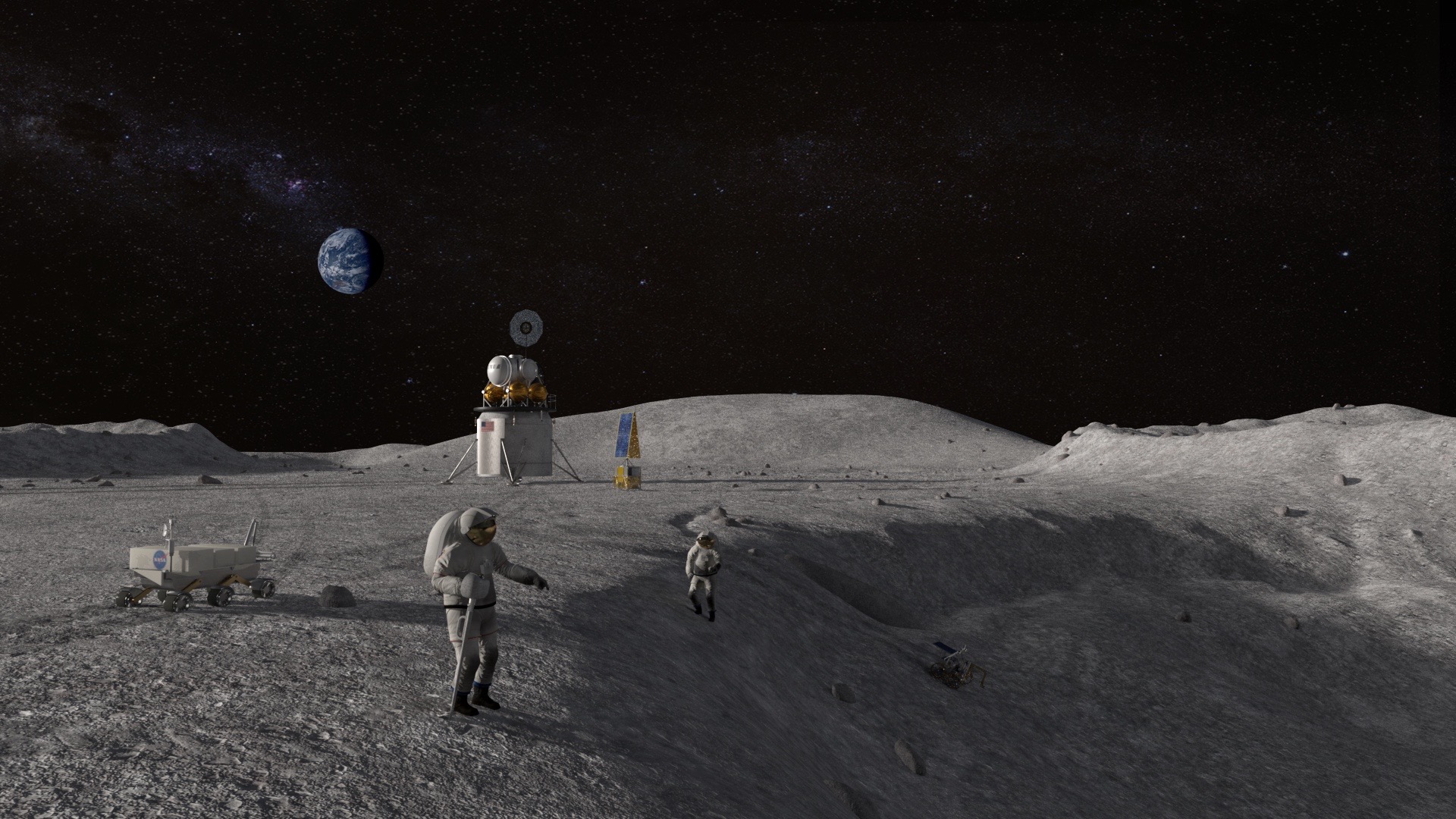Private companies aim to help blaze a new trail to the moon
NASA isn't the only U.S. entity with eyes on the moon.

WASHINGTON — NASA is far from alone in shooting for the moon. Private companies like Jeff Bezos' Blue Origin and Tokyo-based iSpace, for example, are eyeing Earth's nearest neighbor, with visions of a thriving space economy in their heads.
Representatives from both companies, as well as from Northrop Grumman and NASA, appeared on a panel on Jan. 30 at the 23rd Annual Commercial Space Transportation conference here to detail all the ways that private enterprises are aiming for the moon, how they'll get there and how they will be key to making lunar exploration a sustainable endeavor.
The panelists envisioned a lunar research outpost akin to McMurdo Station in Antarctica that would allow future astronauts to explore and live on the moon. But first we need to develop the architecture, said Charlie Precourt, vice president and general manager of propulsion systems at Northrop Grumman. We can look to the International Space Station (ISS) for guidance, he added — how international partners came together to create an infrastructure for successful research and technology demonstrations in low-Earth orbit.
Related: The private spaceflight decade: Commercial space soared in the 2010s
But a lunar surface station is a much more complex endeavor than McMurdo or the ISS. The White House has charged NASA with landing astronauts on the moon by 2024, and the space agency aims to get ready with the help of the private sector. For example, NASA has contracted with several companies to tote agency science and technology payloads to the moon on privately built robotic landers, with the first such deliveries scheduled to take place in 2021.
These missions will help NASA learn more about the lunar surface and the resources available there to support astronauts, agency officials have said.
Brett Alexander, vice president of sales for Blue Origin, touched on the importance of investing in lunar technologies now, to build a "mini-economy" on the moon's surface, which would allow others to come to the moon without the burden of creating the infrastructure from scratch. Alexander likened the strategy to the one that Bezos employed when he was building Amazon: "It was able to be built on top of all sorts of different infrastructure, through the internet and credit cards and postal service that can deliver things, and a phone network," Alexander said.
Get the Space.com Newsletter
Breaking space news, the latest updates on rocket launches, skywatching events and more!
Kyle Acierno of iSpace expanded on the idea of commercial enterprises paving the way for sustainable activities on the moon. He mentioned his company's "small, fast and cheap" rovers that could explore the moon's permanently shadowed regions, which researchers believe harbor lots of water ice.
A potential "tethered" rover system would include a "mother" rover that would land in one area and send its smaller "child" rover to explore, Acierno said. These rovers could "determine what kind of resources are available, so that initial prospecting can be done" in the future, perhaps by NASA spacecraft.
"I look back [over] the last 10 years, and we've achieved so many things that really have been talked about in the industry for a long time," Alexander said. "I also believe that the government is waking up and seeing that, with all that progress that has been made, put into exploration human exploration as well as the science side, a lot of things can happen."
- Will private companies beat NASA to the moon?
- Japanese company ispace now targeting 2021 moon landing for 1st mission
- Blue Moon: Here's how Blue Origin's new lunar lander works
Follow JoAnna Wendel on Twitter @JoAnnaScience. Follow us on Twitter @Spacedotcom and on Facebook.

Join our Space Forums to keep talking space on the latest missions, night sky and more! And if you have a news tip, correction or comment, let us know at: community@space.com.

JoAnna Wendel is a freelance science writer living in Portland, Oregon. She mainly covers Earth and planetary science but also loves the ocean, invertebrates, lichen and moss. JoAnna's work has appeared in Eos, Smithsonian Magazine, Knowable Magazine, Popular Science and more. JoAnna is also a science cartoonist and has published comics with Gizmodo, NASA, Science News for Students and more. She graduated from the University of Oregon with a degree in general sciences because she couldn't decide on her favorite area of science. In her spare time, JoAnna likes to hike, read, paint, do crossword puzzles and hang out with her cat, Pancake.









